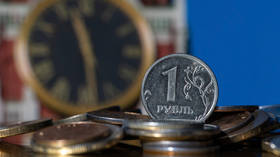Russia eases capital controls

The Russian central bank has relaxed temporary capital control measures, which were introduced to support the domestic currency and prevent capital outflows amid Ukraine-related Western sanctions.
According to the Bank of Russia, starting on April 18, domestic banks are once again allowed to sell euros and dollars to individuals. The measure will be effective through September 9. However, the regulator noted that banks are only allowed to sell foreign currency banknotes that they received after April 9, 2022.
Russian citizens will also be able to withdraw funds from their foreign currency accounts in both US dollars and euros up to $10,000 or its equivalent, while amounts above this limit can be withdrawn in rubles.
Earlier this month, the authorities also scrapped the previously introduced 12% commission for buying hard currency through brokerages.
Capital control measures were temporarily introduced last month in order to support the ruble, which slid to all-time lows after the US and its allies froze Russian central bank reserves in retaliation for Moscow’s military operation in Ukraine.
However, the national currency strengthened significantly over the following weeks thanks to capital controls, and most notably after Russia introduced a new ruble payment mechanism for natural gas exports. The ruble was trading close to its value before the Ukraine crisis on Monday, at 79.1 rubles per US dollar, and 81.8 rubles per euro at around 11:40 GMT, according to data from the Moscow exchange.
For more stories on economy & finance visit RT's business section













